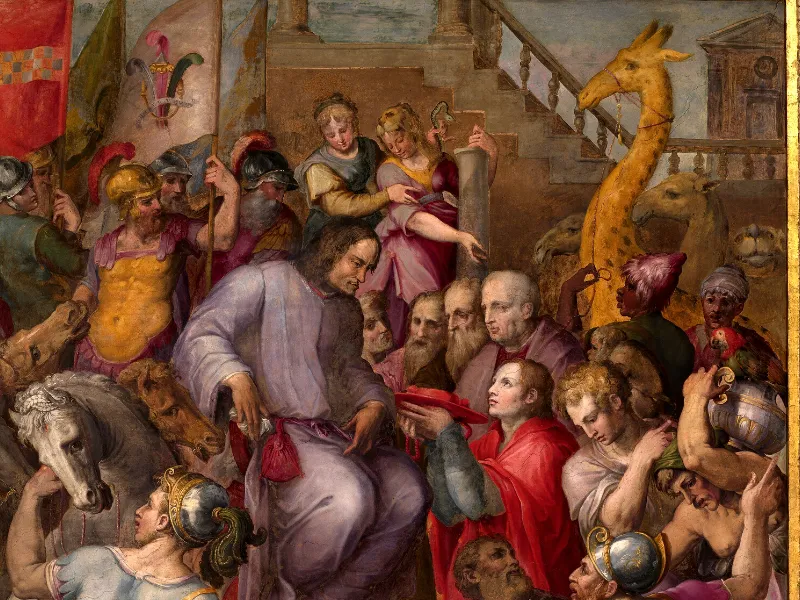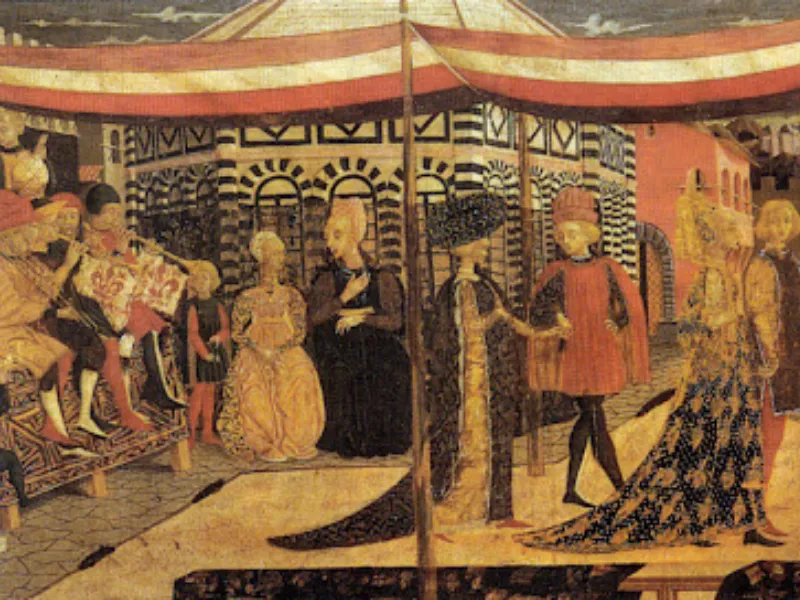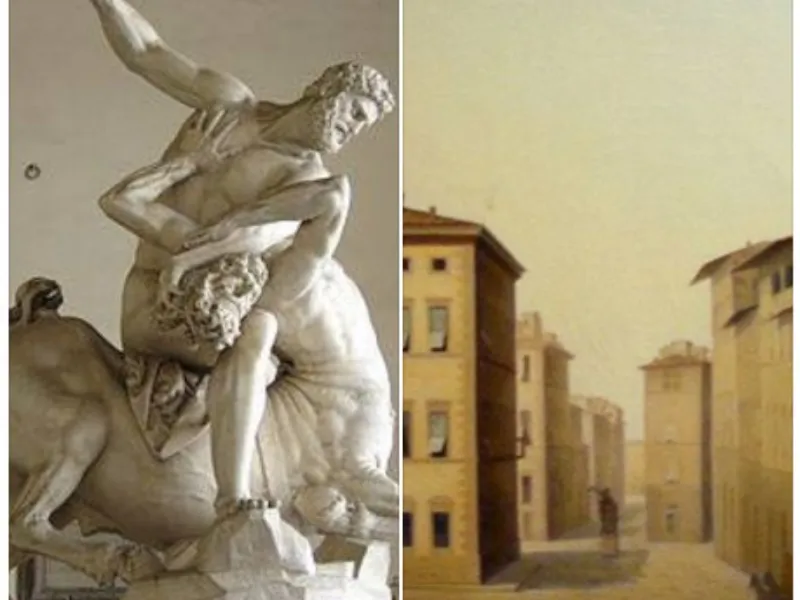Michelangelo and his friend Lorenzo il Magnifico
Michelangelo and his friend Lorenzo il Magnifico.
Lorenzo il Magnifico died in 1492 and Michelangelo was only 17 years old. He lost the friend he knew in the "Giardino di San Marco". Giorgio Vasari tells the two men met here for the first time: this garden was the first accademy created by Lorenzo il Magnifico who gave the students the possibility to study and reproduce the old roman sculptures he owned.
Michelangelo was sculpting a satyr when Lorenzo came next to him and said: "Michelangelo, the original statue represents an old satyr, why have you sculpted all his teeth? Immediately the child hammered some teeth away. A strong friendship born between the wo men and Michelangelo grew up with Lorenzo's family until his death. The artist took part to the discussion of the neoplatonic court composed of Lorenzo, Agnolo Poliziano, Marsilio Ficino, Pico della Mirandola and he shared their same ideas. Lorenzo commissioned the "Centauromachia" today preserved inside Casa Buonarroti in 1492 but Michelangelo left it uncomplete for the death of his best friend. The same year the Agostinian friars of the Convent of S. Spirito housed Michelangelo. Lapo Bichiellini, the prior of the convent, gave him the opportunity to dissect bodies. The young artist perfectioned his studies about anatomy: he wanted to reproduce the perfection of a human body, one of the reason for which he became really famous all over the world. One year later, in 1493, Michelangelo sculpted a wooden crucifix to thank the prior. Christ is represented here as a young man! Probably Michelangelo was inspired by an accidentally dissection he made of a body of an aristocratic child. Remember that dissection was not allowed! Each single muscle of Christ can be recognized and really exist inside our human body! A really masterpiece!

Altri articoli

A giraffe in Palazzo Vecchio
The animal was a gift the Egyptian sultan offered to Lorenzo in 1487 to obtain his support.

What is a 'Cassone Nuziale'
They usually were commissioned in pairs and filled with the dowry of the future wife.

Hercoles and Nesso by Giambologna
A great governor needs intelligence but also energy and force to be at the head of a princedom.

The Cumaean Sibyl
An artistic representation of past prophecies

